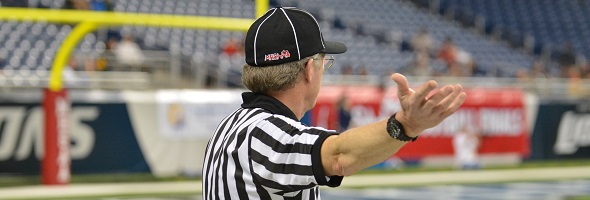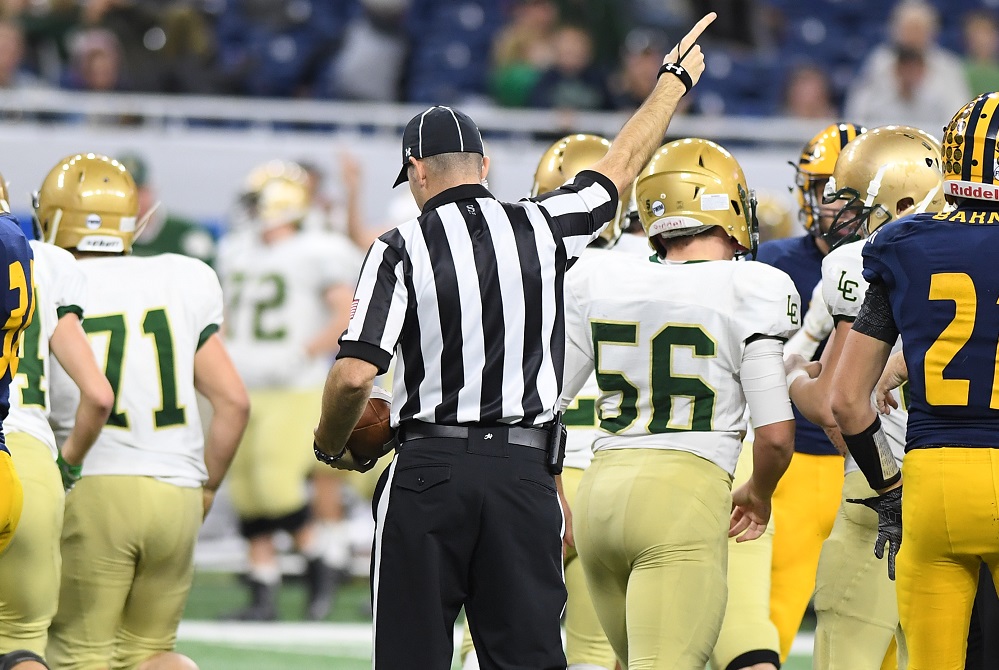
Be the Referee: Clipping Clipped
August 25, 2016
MHSAA assistant director Mark Uyl opens a new year of “Be the Referee” by explaining the latest rules change affecting blocking in football.
Be The Referee is a series of short messages designed to help educate people on the rules of different sports, to help them better understand the art of officiating, and to recruit officials.
Below is this week's segment – Clipping in the Free Blocking Zone - Listen
Most of the recent rules changes in high school football have all dealt with increasing player safety. The most significant change for the 2016 season focuses on safety, especially for offensive and defensive linemen.
For many years, the free blocking zone (the area between the two offensive tackles) was an area where two types of blocks – blocks below the waste and clipping, that are illegal on other parts of the field – were legal if done by linemen initially at the start of a play. For this season, clipping is now an illegal block, even in the free blocking zone, while blocks below the waste continue to be legal from in front.

Be the Referee: Pass Interference
By
Geoff Kimmerly
MHSAA.com senior editor
September 2, 2021
This week, MHSAA officials coordinator Sam Davis explains the differences in high school pass interference rules from those at the college and pro levels.
Be The Referee is a series of short messages designed to help educate people on the rules of different sports, to help them better understand the art of officiating, and to recruit officials.
Below is this week's segment – Pass Interference – Listen
One of the big differences between high school football and the college or pro game is how pass interference is called.
In high school, there is no such thing as an “uncatchable” pass. If there is illegal contact by the defender while the ball is in the air, that’s pass interference, no matter where the pass ultimately ends up.
Also – in high school – a defender can “face guard” as long as no contact is made with the receiver. That is not pass interference, even if the defender does not look back for the ball.
Both of those interpretations differ from the college and pro game. Both (of those) levels have an uncatchable exception, and neither allows for face guarding.
Keep that in mind the next time you think you’ve spotted pass interference at the high school level.
Previous editions
Aug. 26: Protocols and Mechanics – Listen

